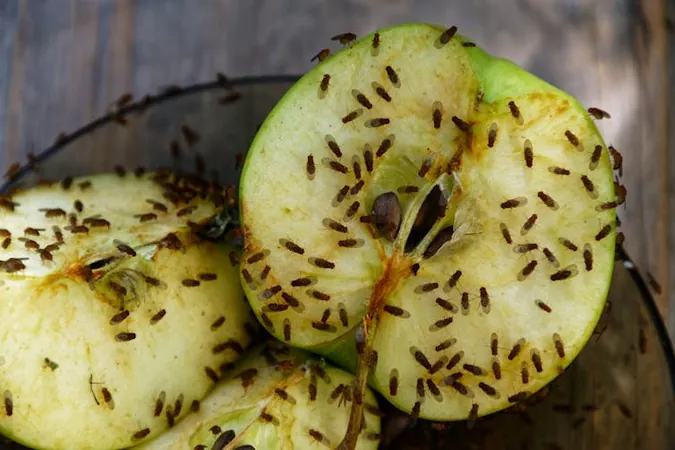
The Unsung Hero of Genetics: How the Humble Fruit Fly Revolutionized Science
2025-01-05
Author: Jia
Did you know that the little fruit fly, often seen buzzing around your kitchen, has played a pivotal role in groundbreaking scientific advancements? Without these tiny creatures, we might not have made some of the most significant discoveries in genetics, medicine, and evolution.
The Origins of the Fruit Fly: A Journey Through Time
Originating from the woodlands of south-central Africa, the fruit fly, known scientifically as Drosophila melanogaster, formed a symbiotic relationship with the marula fruit— a staple in the diets of local human communities. This connection allowed the fruit fly to spread from Africa to Asia, Europe, and eventually North America, Central America, and Australia.
It’s crucial to differentiate Drosophila melanogaster from the more colorful “true” fruit flies, or tephritid flies, which are pests causing significant agricultural damage. While Drosophila is typically found in rotting fruit during harvest, it's rarely considered a pest.
Why Fruit Flies Are Ideal for Scientific Research
Fruit flies are unique among insects, mainly due to their small size, rapid life cycle, and ability to produce numerous offspring. These characteristics make them ideal models for scientific experimentation. Additionally, advancements in genetic tools have allowed researchers to create an array of genetic variations, including fluorescent proteins and the insertion of foreign genes to study their effects.
As a result, Drosophila melanogaster has been instrumental in four critical areas of research:
1. Unraveling the Riddles of Genetics:
The pioneering studies on fruit flies laid the foundation for modern genetics. In the early 20th century, researchers discovered the chromosomal basis of inheritance through breeding experiments involving red-eyed and mutant white-eyed flies. Fast forward to the 1990s, when the fruit fly genome was sequenced to aid the assembly of the human genome. Remarkably, about 65% of fruit fly genes have direct counterparts in humans, allowing insights into diseases, aging, and development.
2. Insights into Tissue Repair Mechanisms:
Regeneration capabilities vary significantly among species. For humans, understanding wound healing is crucial. Fruit flies have emerged as essential models for exploring how cells coordinate to heal injuries. Despite their brief lifespans, they are also valuable in cancer research, providing insights into how tumors behave in living organisms, beyond traditional cell culture methods.
3. Innovations in Disease Control:
The fruit fly's contributions extend into public health, notably through the discovery of the Wolbachia bacteria, which help reduce the transmission of dengue fever. By transferring this bacteria into mosquito populations, scientists effectively disrupt the virus’s life cycle, leading to significant declines in dengue cases in regions like northern Australia.
4. Exploring the Mysteries of Evolution:
Drosophila melanogaster serves as a powerful tool for studying evolutionary processes and conservation efforts. Research indicates that maintaining genetic diversity within species is vital for adapting to environmental changes and combatting diseases. Current studies are even tracking fruit fly populations to observe changes in response to climate shifts.
So, the next time you spot that small yellow-brown insect slipping around your fruit bowl, take a moment to appreciate its monumental contributions to science. Instead of swatting it away, consider celebrating the wonders of Drosophila melanogaster and the countless lives it has touched through its role in advancing our understanding of genetics, health, and evolution. Who knew such a small creature could have such a big impact?


 Brasil (PT)
Brasil (PT)
 Canada (EN)
Canada (EN)
 Chile (ES)
Chile (ES)
 Česko (CS)
Česko (CS)
 대한민국 (KO)
대한민국 (KO)
 España (ES)
España (ES)
 France (FR)
France (FR)
 Hong Kong (EN)
Hong Kong (EN)
 Italia (IT)
Italia (IT)
 日本 (JA)
日本 (JA)
 Magyarország (HU)
Magyarország (HU)
 Norge (NO)
Norge (NO)
 Polska (PL)
Polska (PL)
 Schweiz (DE)
Schweiz (DE)
 Singapore (EN)
Singapore (EN)
 Sverige (SV)
Sverige (SV)
 Suomi (FI)
Suomi (FI)
 Türkiye (TR)
Türkiye (TR)
 الإمارات العربية المتحدة (AR)
الإمارات العربية المتحدة (AR)